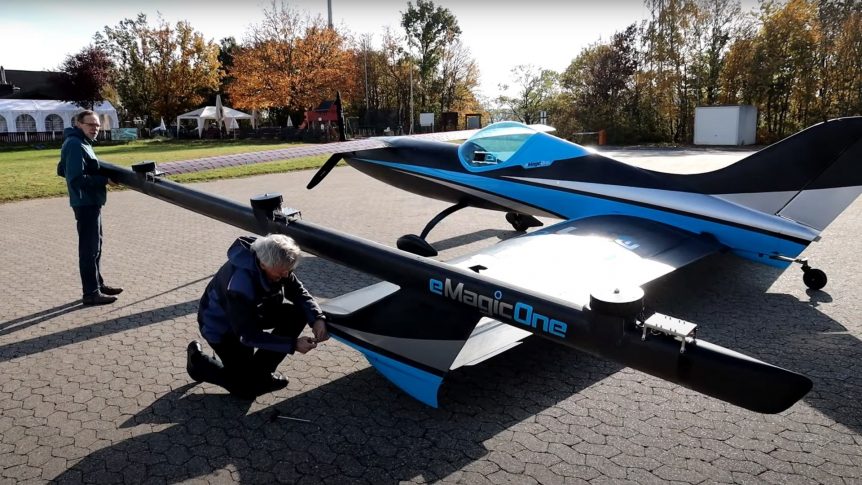Thomas Senkel was an early part of Volocopter, initially called e-Volo. His first efforts resulted in a spider-like creation perched on an exercise ball. It flew, seemed stable, and despite the placement of whirling propeller blades encircling Thomas during his test flights, proved not a hazardous as it looked. Explanatory material accompanying the video declared, “The first manned flight with an electric vertical take-off and landing multicopter (eVTOL) was performed by Volocopter. The flight lasted 90 seconds, after which the pilot Thomas Senkel stated ‘The flight characteristics are good natured. Without any steering input it would just hover there on the spot.’ The flight, which is a Guinness World Record, was performed on October 21st in 2011.” Although he helped develop the e-Volo which transfigured into Volocopter variants, Thomas apparently left the company to strike on his own patent-filled adventures. A Bird in the Canaries He worked on a variety of electric bikes and trikes, with the most aerial being …
Hungarian Flying Trike Makes Debut
This six-rotored, six-motored flying “Y” may make you ask “why, indeed,” but its makers are enthusiastic about its prospects. Even though its second test flight lasted only a minute and a half, its rider looked as happy as though he’d just ridden the mechanical bull at Gilley’s. Certainly the riding posture is similar, and the Flike (flying trike) might show more three-dimensional moves than the beast tethered to the barroom’s floor. https://www.youtube.com/watch?v=CmiMx7ClcSI Flike’s designers and builders are funded by a major Hungarian government-based non-profit organization dedicated, it would seem, to emerging technologies in biological, engineering, and environmental sciences, among others. The six NT-Power motors are probably the 15 kilowatt units (the other option is a 12 kW version), with maximum input of 80 Volts and 280 Amperes. Motor efficiency is 93 percent, but the company shows total system efficiency with battery, controllers, cables, connectors and other components of about 88 percent. This might be a good disclosure approach for all motor vendors. …

